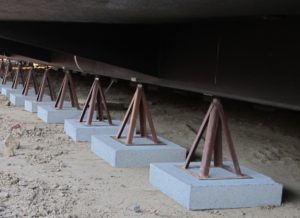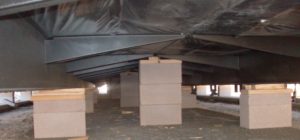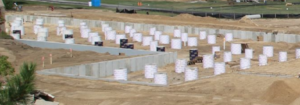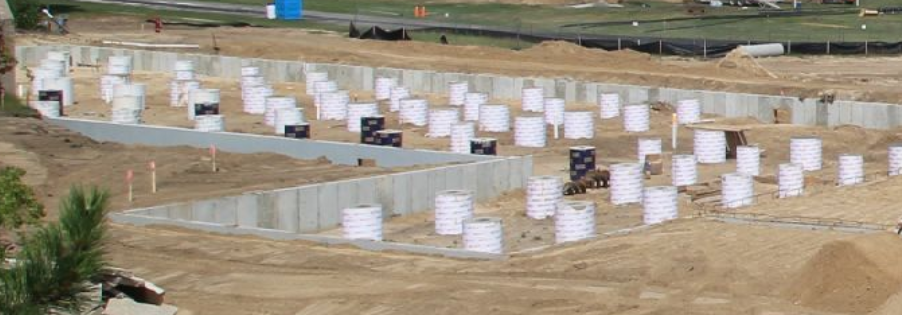What foundation system is best?
We are frequently asked is it worth the time and expense to use a stemwall foundation system instead of the pier & pads or dry stacking CMU blocks. Our team has constructed all of these types and found a longer life cycle and less settling issues with a full stemwall foundation. What are the differences?

Pad & Pier Foundation
- Pads & piers will settle and require relevel adjustments more frequently
- Dry stack CMU blocks have no depth for frost level or rebar or concrete for additional stability
-

drystack foundation

stemwall foundation with sono tubes & footers
- Stemwall foundation systems go below the ground, and above the ground with rebar and concrete to hold the system in place on a more stable bases for a longer life cycle. Additionally stemwalls have supplemental soils testing to reveal the entire condition of the existing ground conditions
Pad & Pier Foundation
When choosing a pads & piers for your foundation system, there is some great flexibility built into the design criteria. Pad & Pier foundation systems are designed to assume lowest possible case soils conditions, and then can be adjusted in time as the soil conditions change. They are a great resource when setting a temporary modular building that will be relocated or moved to a secondary site. They are also quick & easy to install.
CMU Dry Stack Foundation
This modular builidng foundation is commonly referred to as Drystack. Drystack CMU blocks use “shims” for final level and those can shift or corrode, and have to be replaced over time. They are more difficult than piers to install, but can easily relocate to a secondary location. Warmer climate zones choose this type of foundation due to mild weather conditions and availability of materials. CMU blocks are available from most any hardware or big box store and easy to replace.
Stem Wall Foundation System
The modular foundation system called the Stemwall system is engineered specific to each site, and ground condition. The type of material, spacing of footings, and foundation criteria are all sealed by a structural engineer and utilized as a permanent system. Buildings placed on a stemwall can be relocated, but most often they are placed for a long term use. There are access panels under the building so that clients can work in that crawl space in the future should they need to remodel or renovate the modular building floorplan. This modular building foundation system is the most expensive of the three types mentioned in this blog article.
Consult our team for more information: Email: information@mod-sol.com Call us: 800-441-8577 x 1

